Receiving partial shipments
Introduction
Sometimes, you'll have large orders that are received in multiple shipments. To accommodate this, you can create partial receipts in Paragon. This document will explain how to create two partial receipts off a purchase order and then unbox each of them to the correct inventory locations.
Create a receipt from the purchase order
In the receipt module, click the create new receipt button.

On the modal screen that appears, select the purchase orders tab. Select the purchase order you want to receive from. When you are happy with your selection, click the accept button.
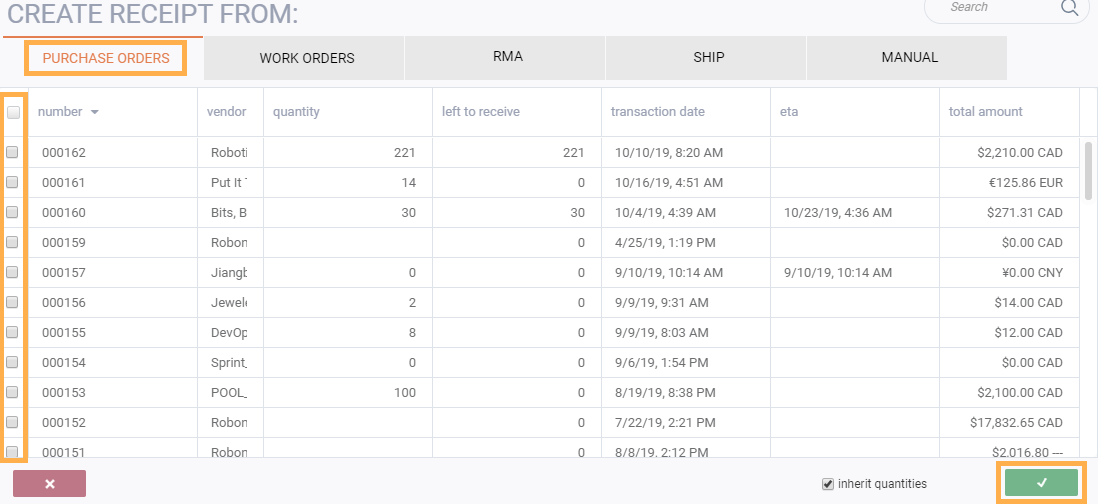
Can't find your purchase order in this list? Ensure that the status of the PO is issued or complete. PO's in hold, void or temp status will not appear.
Editing the quantity received
You should now have a receipt showing the information from the selected purchase order. By default, the amount left to receive from the purchase order will populate in the quantity column of the receipt.

Intuitively, the expected quantity is the amount that was ordered in the purchase order. This cannot be modified, but the quantity (the number representing how many was actually received), can be edited.

When you are finished changing the quantities, click the save button.
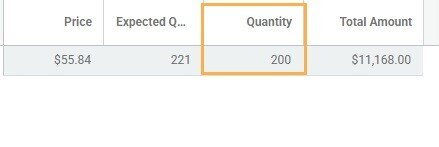
Send the received items to default location
To put the units on this receipt into inventory, the status needs to be changed twice.
First, issue the purchase order by clicking the issue button on the list of action items in the bottom right hand corner of the screen.
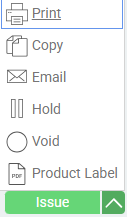
Then, click the action button again and click complete.

The inventory is now transferred to the location set up as default receiving. If you do not have a location set for default receiving, the inventory will be placed in the first location set to default for all transactions.
Unpack inventory into different locations
Let's say that the units on this receipt need to be unpacked into specific locations (other than the default receiving location or the default for all transactions location). To do this, you can use the unpacking function.
Click the green action button and select unpack.

Then, you can unpack any of the units that are currently on the receipt. If a line has 0 units in the quantity column, it cannot be unpacked. To unpack a box, click the add new line items button.
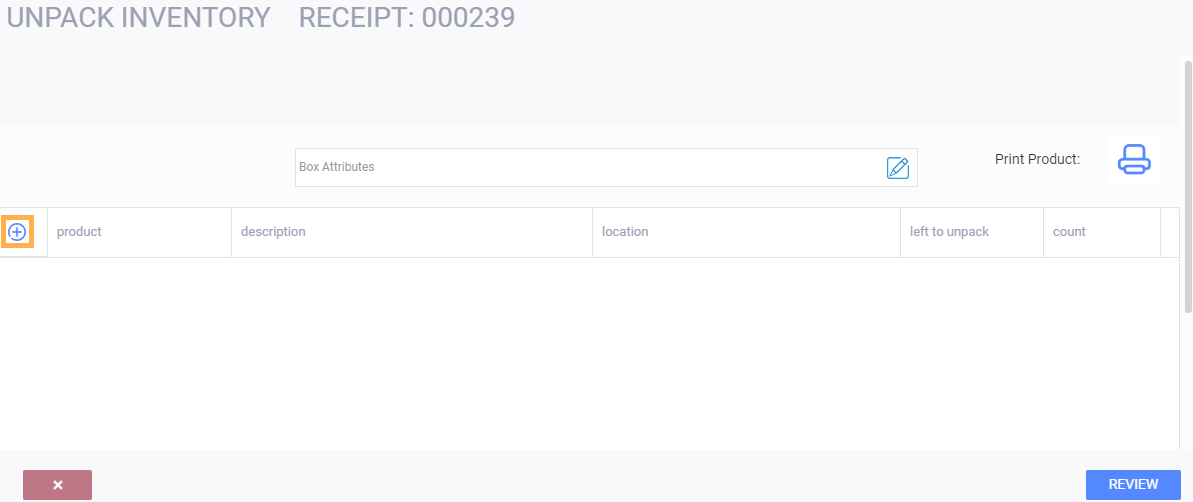
You will get the following popup. Select the product you want to unpack from this box, the quantity you're unpacking, and the location you want the inventory to be put.
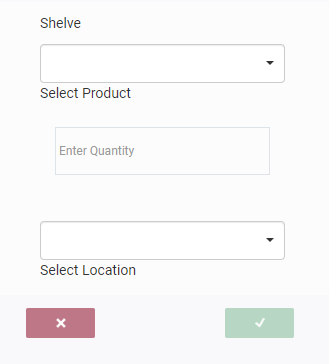
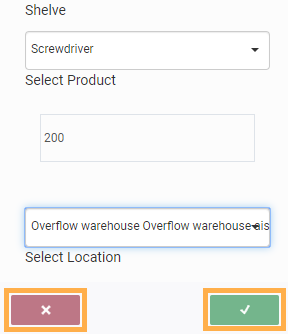
To continue unpacking the same item or different items from the same receipt, click the add new line items button. If you're finished unpacking this shipment, click the review button. Once you click the review button, you'll see a summary of the unpacking.
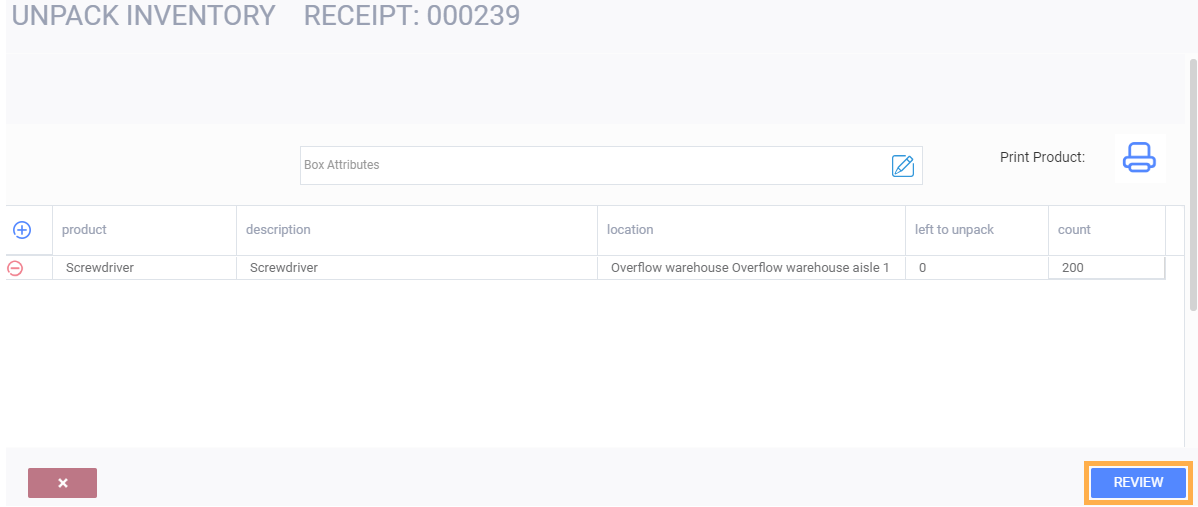
A green check on the right hand side indicates that the shipment line has been fully unpacked. To transfer this shipment to the desired inventory locations, click the proceed to stock shelves button.
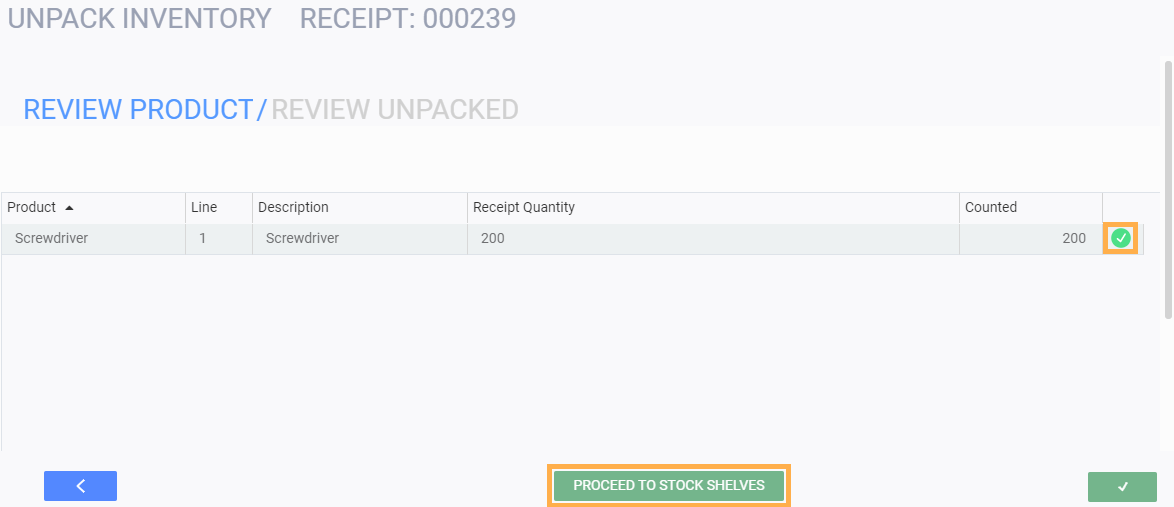
You must unpack the entire shipment in order to add the units to inventory. If you are missing units, you must edit the original receipt and then unpack everything (left to unpack must be at 0).
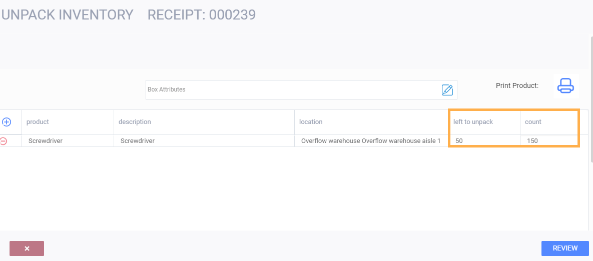
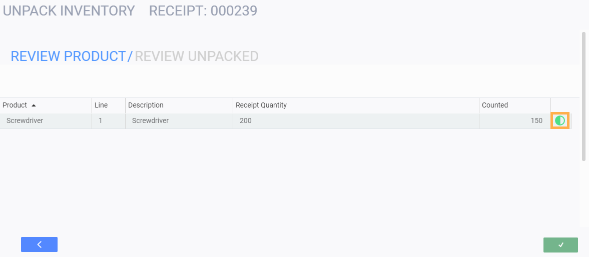
You will be returned back to the receipt screen and a notification will appear confirming that the inventory has been moved to the locations.

Receive the rest of the PO at a later time
When you eventually receive the remaining units on the PO, you will repeat the process above starting with creating a new receipt for the items. This time, the left to receive amount will show what was remaining after the initial receipt of goods. In the sample screen below, the quantity column shows 221, the original quantity from the PO.
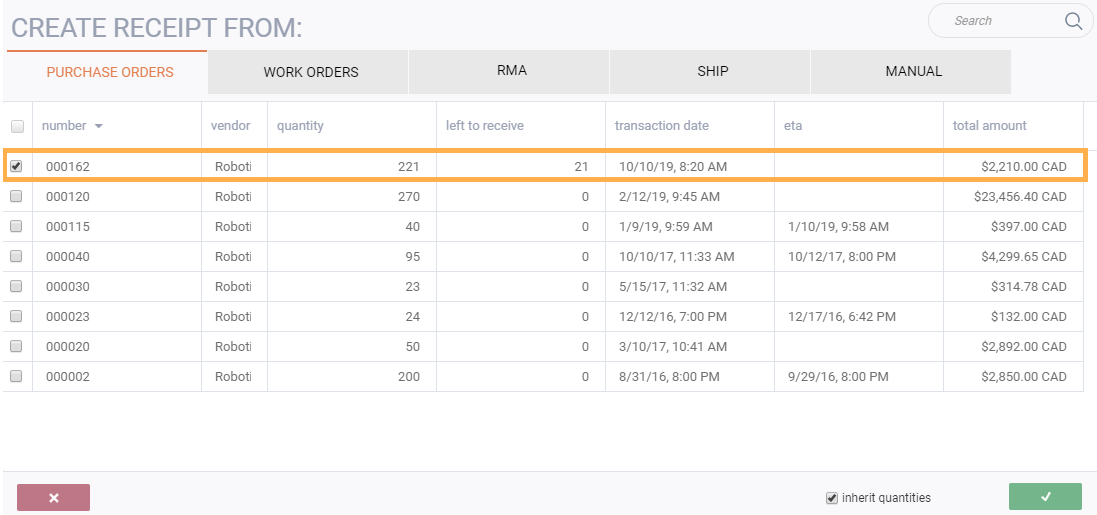
Since you already received 200 of the ordered 221 units, the left to receive column is 21.
You cannot use the unpacking function to make partial receipts. If a PO is not received in full, multiple receipts will need to be created as described in the steps above.
What's next?
Let's take a look at how inventory is moved in ParagonERP!
![paragon logo-1.png]](https://support.paragon-erp.com/hs-fs/hubfs/paragon%20logo-1.png?height=50&name=paragon%20logo-1.png)